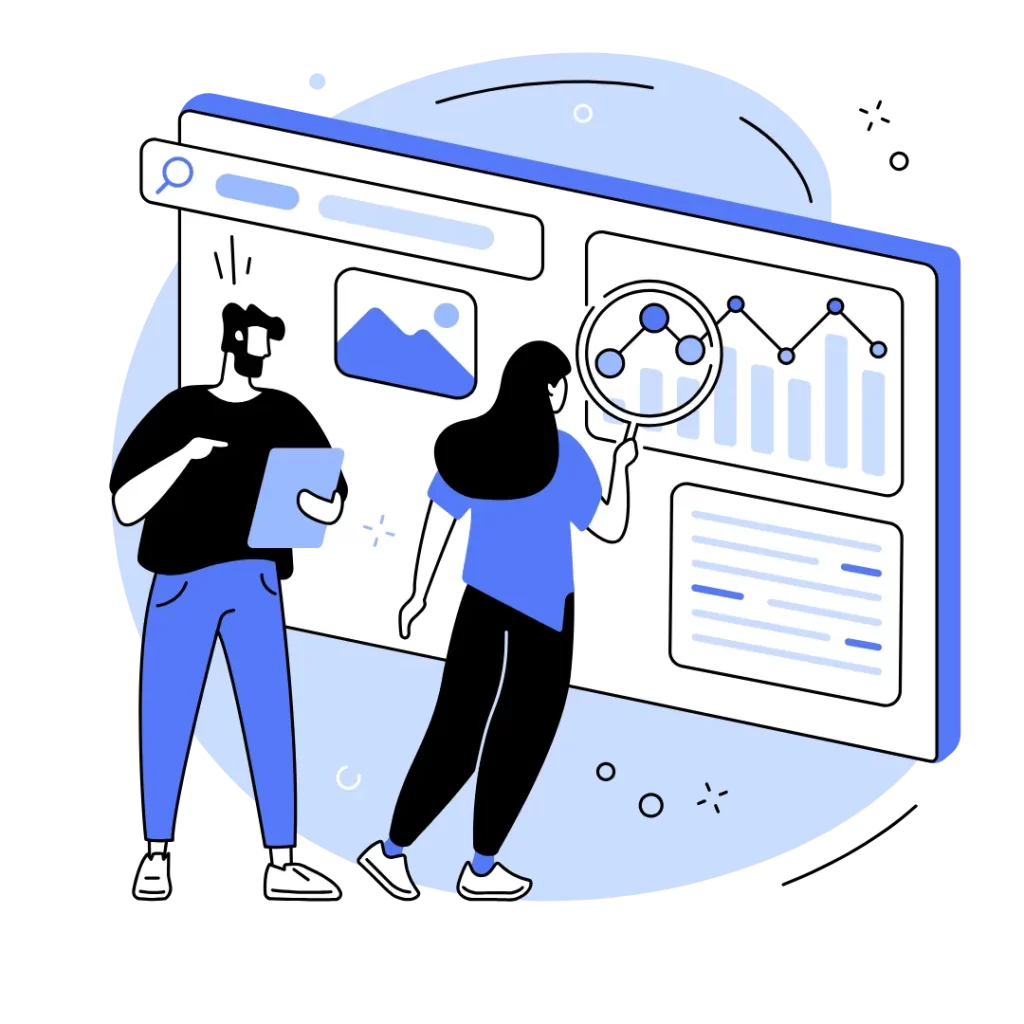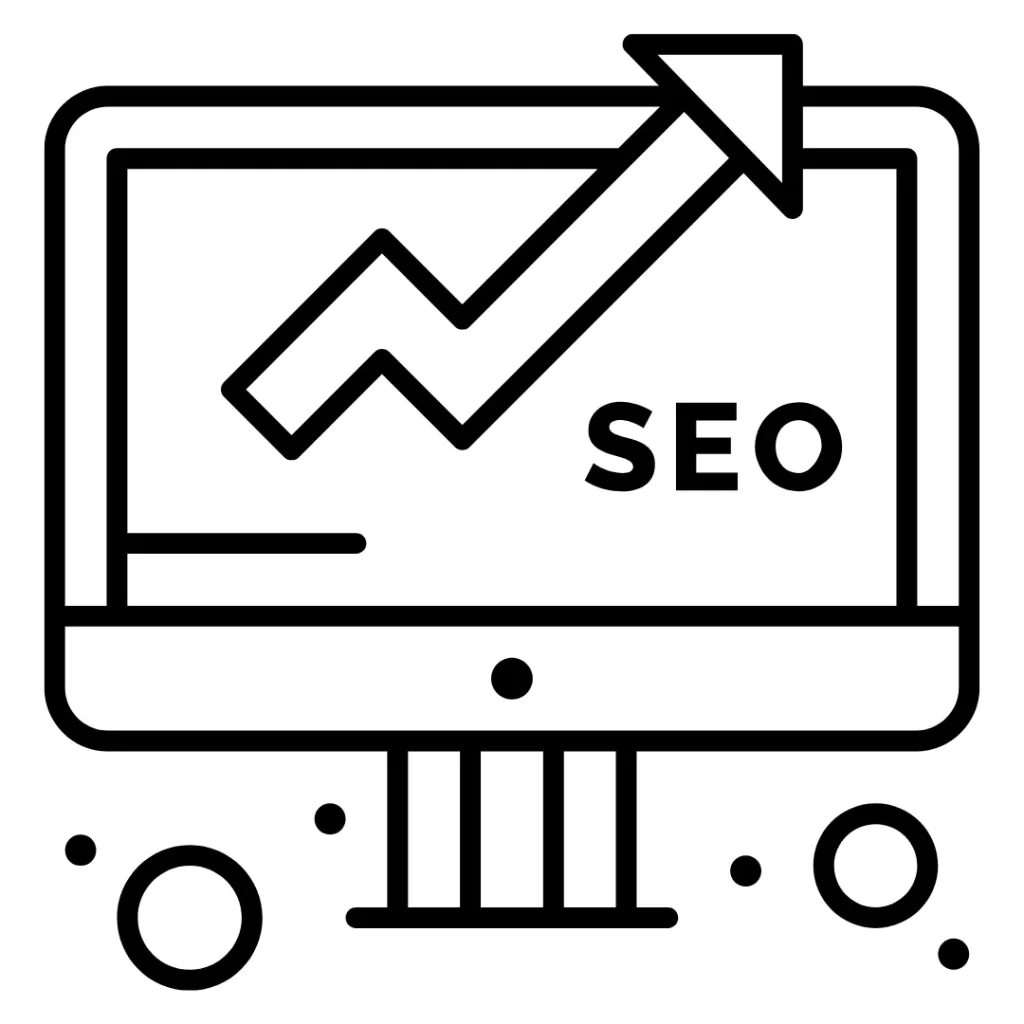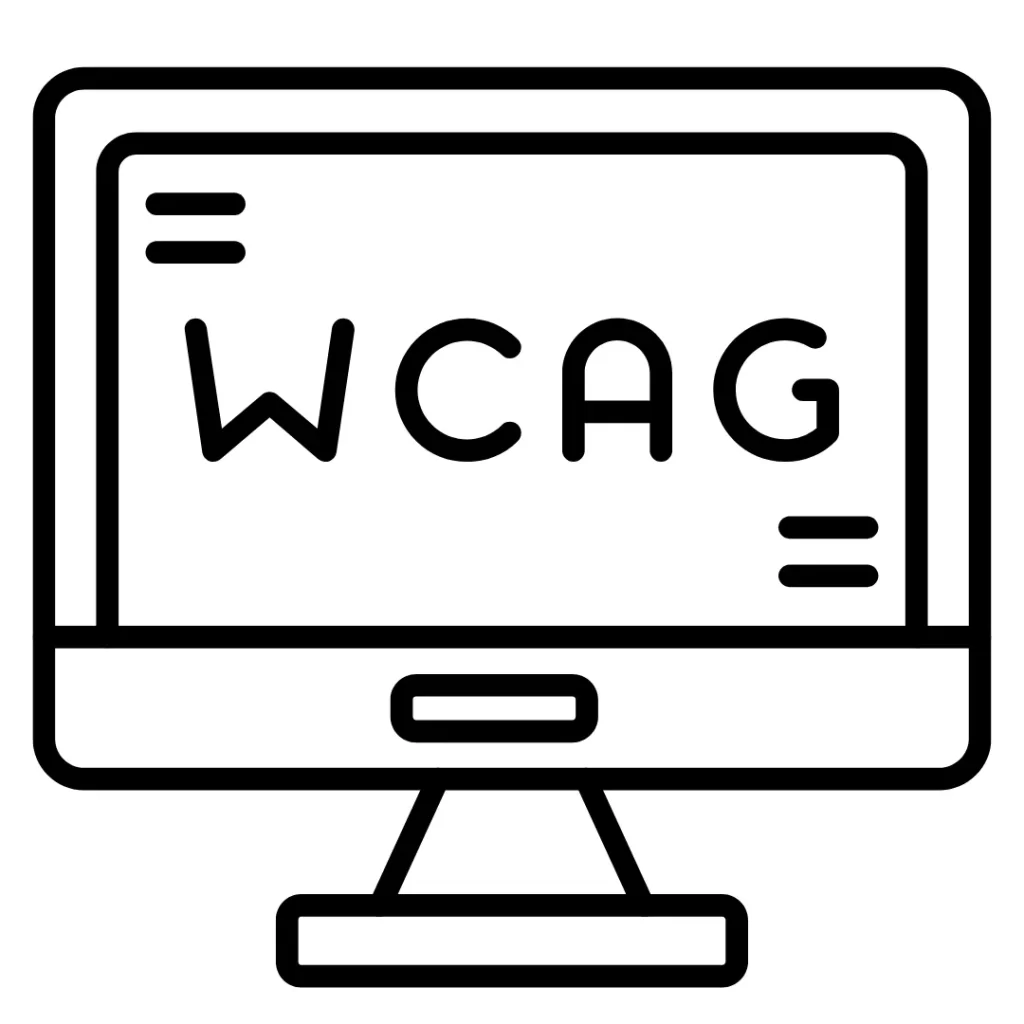Ensure Your Website is Accessible to All
Optimize for Accessibility & Reach Every Customer

Who Can Benefit from Our Services?
Hospitality and Tourism:
Hotels, restaurants, and tourism services thrive on customer experience. Ensure that everyone, including individuals with disabilities, can access your booking systems, menus, and informational content seamlessly. Accessible websites attract a broader audience and enhance your reputation as an inclusive establishment.
E-commerce Businesses:
Every visitor counts in the competitive e-commerce landscape. By optimizing your online store for accessibility, you not only comply with regulations but also open your doors to customers who may have previously faced barriers in shopping. Accessible design can lead to higher conversion rates and customer loyalty.
Educational Institutions:
Whether you run a school, university, or online course platform, our services will help you create a more inclusive learning experience, allowing all students to thrive.
Event Management Companies:
Hosting events that are inclusive is key to successful engagement. Optimize your event information and registration process for accessibility to ensure that everyone can participate, enhancing your reputation and outreach.
Nonprofits and Community Organizations:
Your mission is to serve the community, and that includes everyone. Our accessibility optimization helps ensure that your website is welcoming to all, enabling you to effectively communicate your mission and reach those who need your services.
Real Estate Agencies:
The real estate market is competitive, and accessibility can set you apart. Make property listings easily navigable for all clients, helping you connect with a wider audience in your community.
Financial Services:
Building trust is essential in finance. By ensuring your banking or financial service website is accessible, you demonstrate your commitment to serving all customers, improving their ability to manage their finances online.
Hospitality and Tourism:
Hotels, restaurants, and tourism services thrive on customer experience. Ensure that everyone, including individuals with disabilities, can access your booking systems, menus, and informational content seamlessly. Accessible websites attract a broader audience and enhance your reputation as an inclusive establishment.
Benefits of Accessibility-Driven SEO

- Increased Traffic: A study of 847 domains showed that, on average, websites saw a 12% increase in organic search traffic after implementing accessibility solutions*73.4% of domains** experienced increased traffic, with 66.1% seeing an increase of up to 50% . (source:
www.accessibilitychecker.org) - Eer Experience: An accessible website is easier for everyone to use, including individuals with disabilities, slow internet connections, and mobile device users.
- Legal Compliance: With the upcoming EU Accessibility Act in 2025, businesses must comply with regulations to avoid legal penalties. Additionally, adherence to the Americans with Disabilities Act (ADA) and Web Content Accessibility Guidelines (WCAG) ensures that your website is usable by all.

Accessibility-Driven SEO Services Pricing
One-Time Projects
Small Website Accessibility Audit
What's Included: Comprehensive Accessibility Evaluation Detailed Compliance Check against WCAG standards Accessibility Issues Report with Recommendations Implementation Guidance for Quick Fixes
375€
Ideal for small businesses or personal websites (up to 10 pages).Medium Website Accessibility Audit
What's Included: In-Depth Accessibility Evaluation of Key Pages Thorough Compliance Check against WCAG standards Detailed Report on Accessibility Issues Follow-Up Consultation to Discuss Findings Recommendations for Improvement and Best Practices
€750
Comprehensive audit for medium-sized businesses (11-30 pages)Large Website Accessibility Audit
What's Included: Comprehensive Evaluation of All Key Areas Full Compliance Check with WCAG standards Detailed Accessibility Issues Report Follow-Up Consultation and Discussion of Findings Actionable Recommendations for Full Remediation Implementation Support for Key Changes
€1,125
Extensive audit for large businesses or e-commerce sites (31+ pages)Single Page Accessibility Optimization
Evaluation of Current Accessibility Status Recommendations for Accessibility Improvements Implementation of Changes Based on Recommendations Testing and Verification of Accessibility Features Final Report on Page Optimization
€175
Optimize a single page for accessibility.Ongoing Services
Accessibility Spark
What's Included: Remediation Implementation for Up to 10 Pages Integration of Accessibility Features Testing and Verification for Compliance Monthly Maintenance Checks Follow-Up Consultation for Continuous Improvement
€250/month over three months
Implementation of necessary changes for small websitesMedium Website Accessibility Improvments
What's Included: Full Remediation Implementation for 11-30 Pages Accessibility Feature Integration Across Key Pages User Testing and Feedback Collection Monthly Performance Reports Ongoing Support and Recommendations
€300/month for five months
Comprehensive implementation for medium-sized websitesLarge Website Accessibility Package
What's Included: Comprehensive Remediation for 31+ Pages Integration of Advanced Accessibility Features Across Site Detailed User Testing and Feedback Collection Continuous Support and Content Updates Monthly Accessibility Audits and Performance Reports
€375/month for six months
In-depth accessibility implementation tailored for larger websites needing comprehensive support.Who Benefits from Accessibility-Optimized Websites?
Accessibility-optimized websites create a more inclusive digital environment that benefits various groups.
Here are the key beneficiaries:
Individuals with Disabilities: Accessibility features ensure that users with visual, auditory, motor, or cognitive impairments can effectively navigate and interact with online content.
Elderly Users: Older adults often face challenges with traditional web design. Accessibility optimizations help them access information and services more comfortably.
Business Owners: By making your website accessible, you broaden your customer base, increase potential sales, and improve your brand’s reputation as an inclusive business.
Search Engines: Websites that adhere to accessibility standards often rank higher in search results, as search engines prioritize user-friendly experiences. This leads to increased visibility and traffic.
Corporate Responsibility: Companies committed to social responsibility can enhance their image by ensuring their online platforms are accessible, aligning with values of inclusivity and equality.
Legal Compliance: Accessibility-optimized websites help businesses comply with legal standards and regulations, reducing the risk of potential lawsuits.
Content Creators: Bloggers and content creators expand their audience by ensuring that their materials are accessible to all, fostering a more engaged community.

Where Do Websites Most Frequently Encounter Accessibility Issues?
Visual Content: A common problem is the lack of alternative text (alt text) for images. Without this text, users with visual impairments cannot access the information conveyed by images, graphs, and charts.
Keyboard Navigation: Many websites are not designed for users who rely on keyboard navigation. This can be a significant barrier for individuals with motor disabilities, as they may struggle to access all parts of the site without a mouse.
Color Contrast: Websites often fail to provide sufficient contrast between text and background colors. This oversight can make it challenging for people with visual impairments or color blindness to read the content effectively.
Forms: Accessibility issues frequently arise with web forms, such as missing labels, vague instructions, and inadequate error messaging, which can hinder users from successfully completing them.
Dynamic Content: Sites that use JavaScript for dynamic updates may not notify assistive technologies when changes occur. This lack of communication can leave users unaware of important content updates.
Semantic HTML: Many websites do not utilize HTML elements and structure correctly. For instance, using headings improperly can confuse users of screen readers, disrupting their navigation.
Multimedia Accessibility: Often, websites do not provide captions, transcripts, or audio descriptions for videos and audio content, making it difficult for users with hearing or visual impairments to access this information.

How Does Web Accessibility Impact SEO?
Web accessibility positively influences search engine optimization (SEO) in several ways:
Enhanced User Experience: Websites that prioritize accessibility tend to offer a better user experience, which can lead to lower bounce rates and higher user engagement—both of which can improve search rankings.
Crawling and Indexing: Accessibility best practices, like using appropriate heading structures and providing alt text for images, help search engines crawl and index content more effectively, boosting its visibility in search results.
Wider Audience Reach: By making websites accessible, businesses can reach a broader audience, including individuals with disabilities and older adults, leading to increased traffic and potential conversions.
Alignment with Best Practices: Many accessibility guidelines coincide with SEO best practices, such as optimizing websites for mobile users and improving loading speeds, which further enhances search engine rankings.

What Does Compliance with WCAG Mean?
According to the Web Content Accessibility Guidelines (WCAG) established by the World Wide Web Consortium (W3C), a website must adhere to the following principles to be considered accessible:
Perceivable: All information and user interface elements must be presented in ways that users can perceive. This includes providing text alternatives for non-text content, such as images and videos, and ensuring that content can be adapted for different formats (like screen readers).
Operable: All user interface components must be operable. This means that every function should be accessible via a keyboard, users should have enough time to read and interact with content, and navigation should be straightforward.
Understandable: The information and operation of the user interface must be easy to understand. Text should be clear and straightforward, web pages should behave predictably, and users should receive assistance when errors arise.
Robust: Content must be robust enough to be interpreted by a variety of user agents, including assistive technologies. This includes following standard coding practices to ensure compatibility with both current and future technologies.
By following these principles, a website can provide a more accessible experience for all users, enhancing usability and supporting effective search engine optimization.

ADA & EAA
Americans with Disabilities Act (ADA)
Overview: The ADA is a comprehensive civil rights law enacted in the United States in 1990. It prohibits discrimination against individuals with disabilities in all areas of public life, including jobs, schools, transportation, and all public and private places open to the general public.
Web Accessibility: While the ADA does not explicitly mention website accessibility, the Department of Justice has indicated that websites are covered under the ADA if they are deemed places of public accommodation. This means that businesses must ensure their websites are accessible to individuals with disabilities, following guidelines similar to those provided by the Web Content Accessibility Guidelines (WCAG).
Key Features:
- No specific deadline: The ADA does not have a fixed compliance deadline, leading to varying interpretations and enforcement across different jurisdictions.
- Enforcement: Individuals can file lawsuits against businesses that fail to comply, which has led to a rise in litigation related to website accessibility.
- Standards: Many organizations refer to WCAG as a standard for achieving ADA compliance, but compliance can vary by interpretation.
EU Accessibility Compliance
Overview: The EU has established a more structured approach to accessibility through the European Accessibility Act (EAA) and the Web Accessibility Directive. The EAA aims to improve the accessibility of products and services for people with disabilities across the EU.
Web Accessibility: The Web Accessibility Directive, which applies to public sector bodies, requires that websites and mobile applications meet specific accessibility standards. The deadline for compliance with these standards is set for 2025.
Key Features:
- Clear compliance deadline: The Web Accessibility Directive mandates that all public sector websites and mobile apps must comply with accessibility standards by June 2025.
- Scope: The directive primarily applies to public sector websites but encourages private sector businesses to follow similar guidelines.
- Standards: Compliance is typically measured against WCAG 2.1 AA success criteria, which sets specific requirements for web accessibility.
- Enforcement: EU member states are required to enforce compliance through national legislation, and users can report non-compliant sites to relevant authorities.
Key Differences
Scope of Application:
- ADA: Applies broadly to all businesses in the U.S. considered places of public accommodation, without specific guidance on the web.
- EU Accessibility Compliance: Primarily targets public sector organizations, although it encourages private sectors to follow suit.
Compliance Deadline:
- ADA: No fixed deadline; compliance is ongoing and can vary based on interpretations.
- EU Accessibility Compliance: A clear compliance deadline of June 2025.
Enforcement Mechanisms:
- ADA: Enforcement largely through lawsuits by individuals, leading to potential legal action against non-compliant businesses.
- EU Accessibility Compliance: Enforcement is carried out by national authorities, with reporting mechanisms for users to alert officials about non-compliance.
Standards and Guidelines:
- Both frameworks reference WCAG standards, but the ADA does so indirectly, while the EU explicitly requires adherence to these standards as part of the Web Accessibility Directive.
In summary, while both the ADA and the EU’s accessibility regulations aim to improve accessibility for individuals with disabilities, they differ in scope, enforcement, and compliance timelines. Businesses operating in these regions need to understand the respective requirements to ensure compliance and inclusivity.
